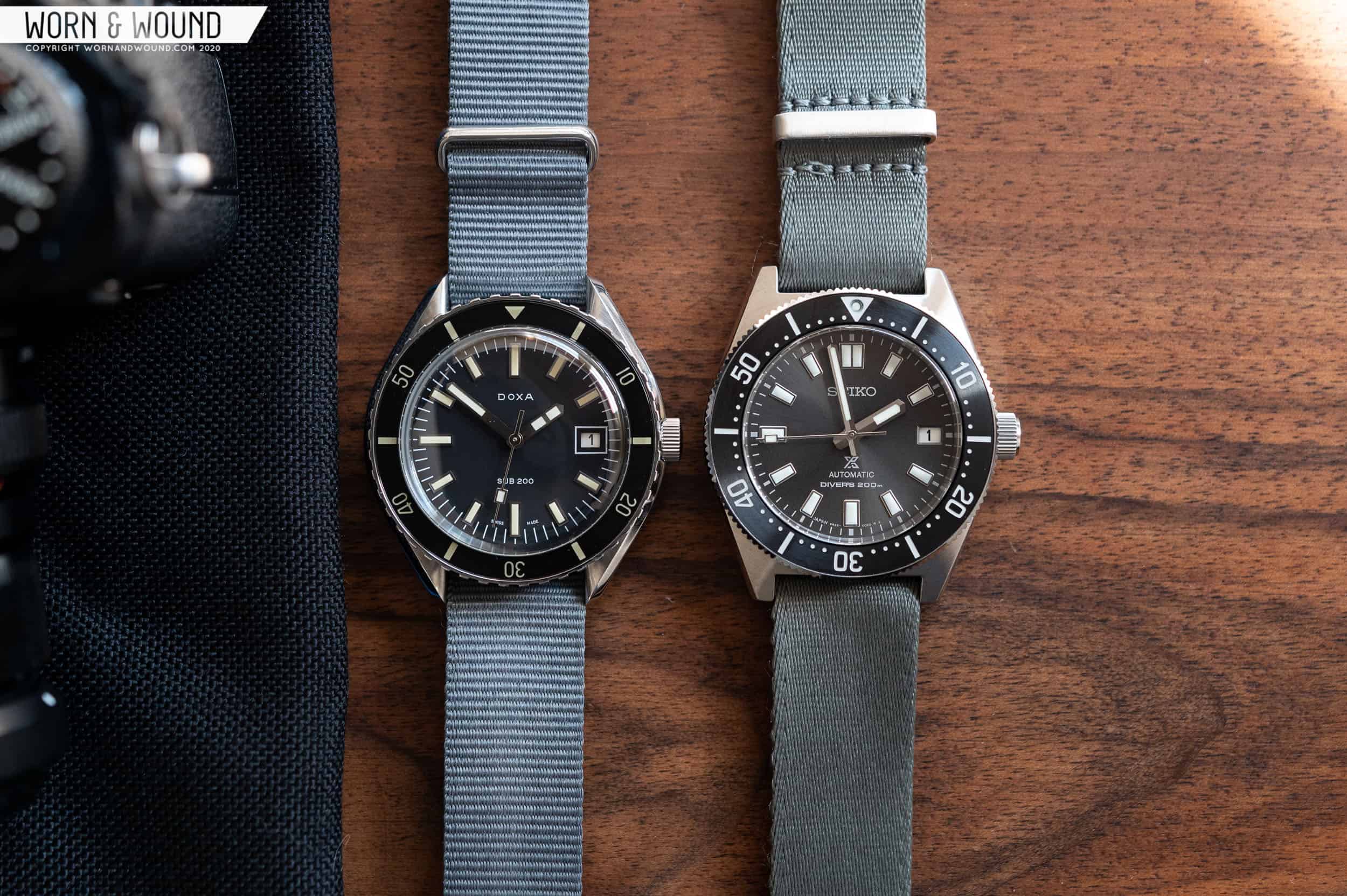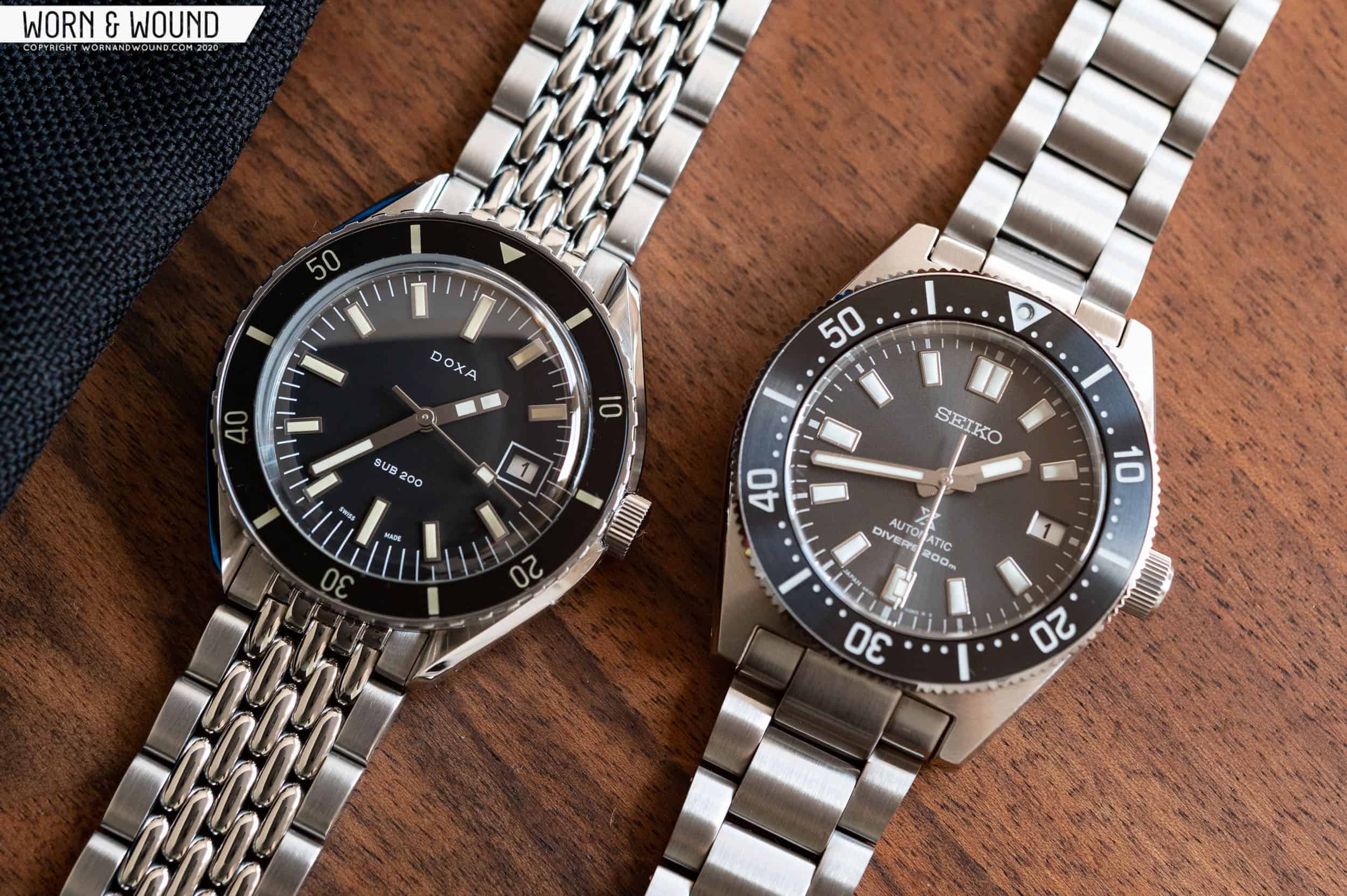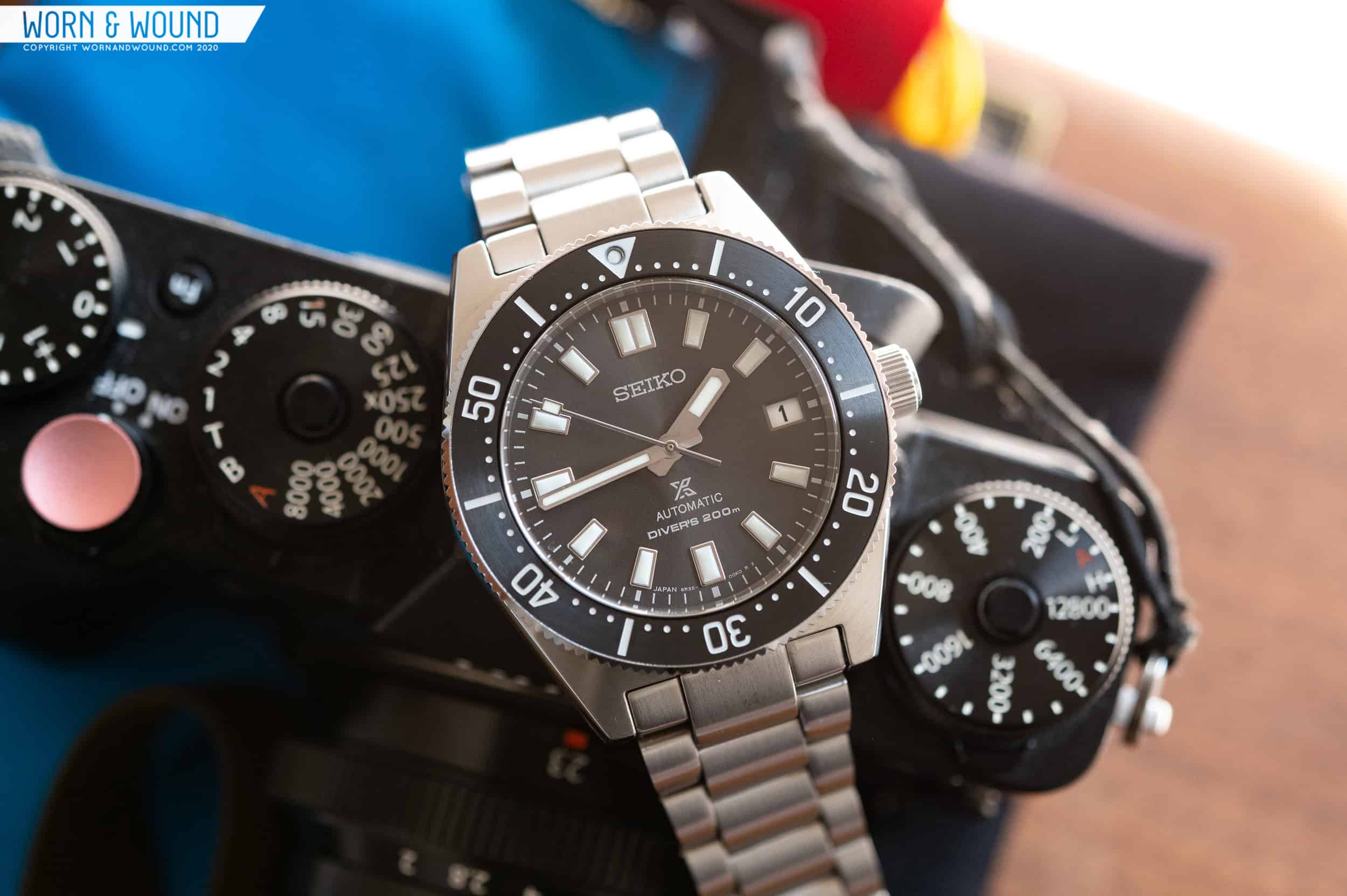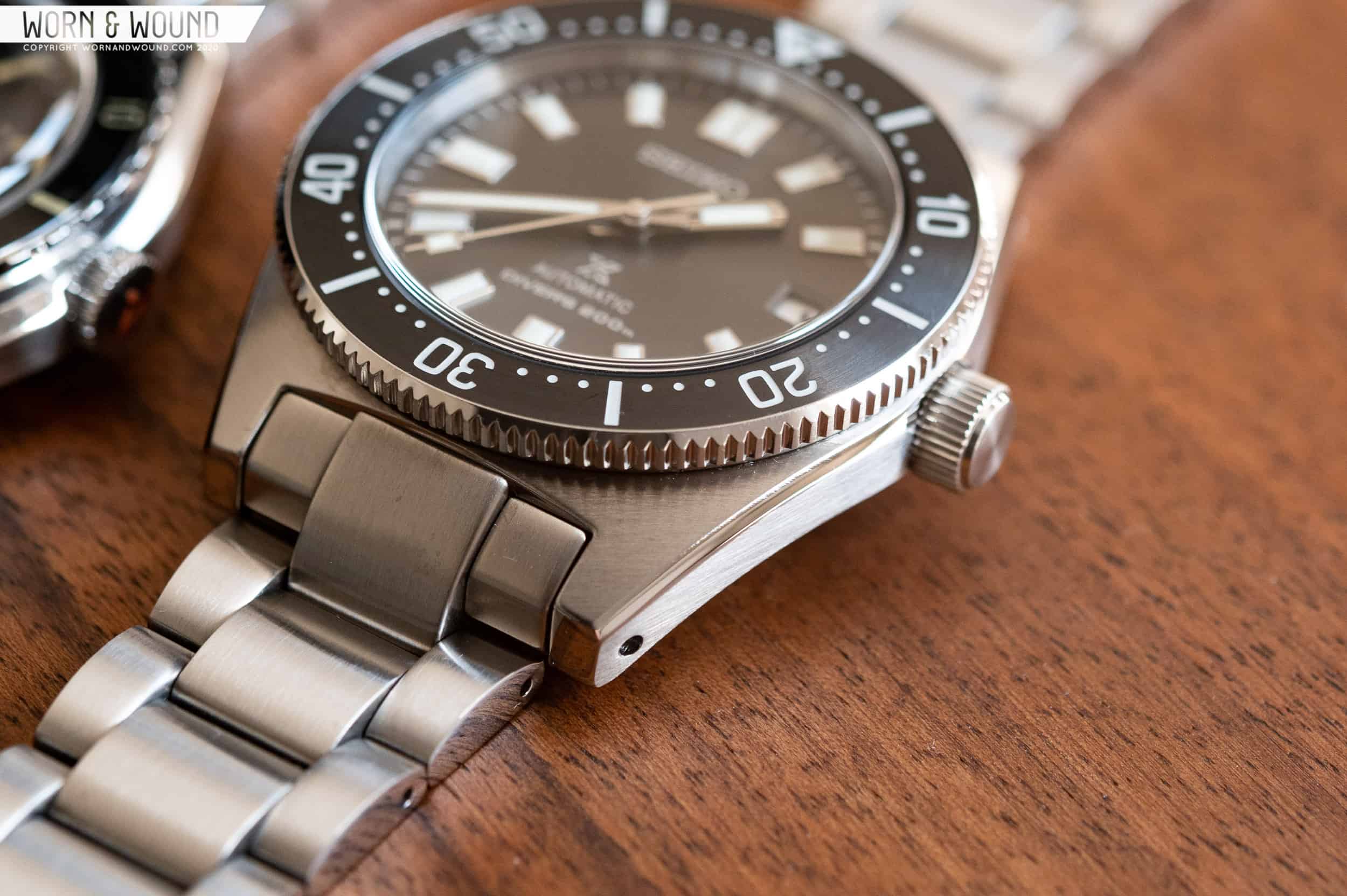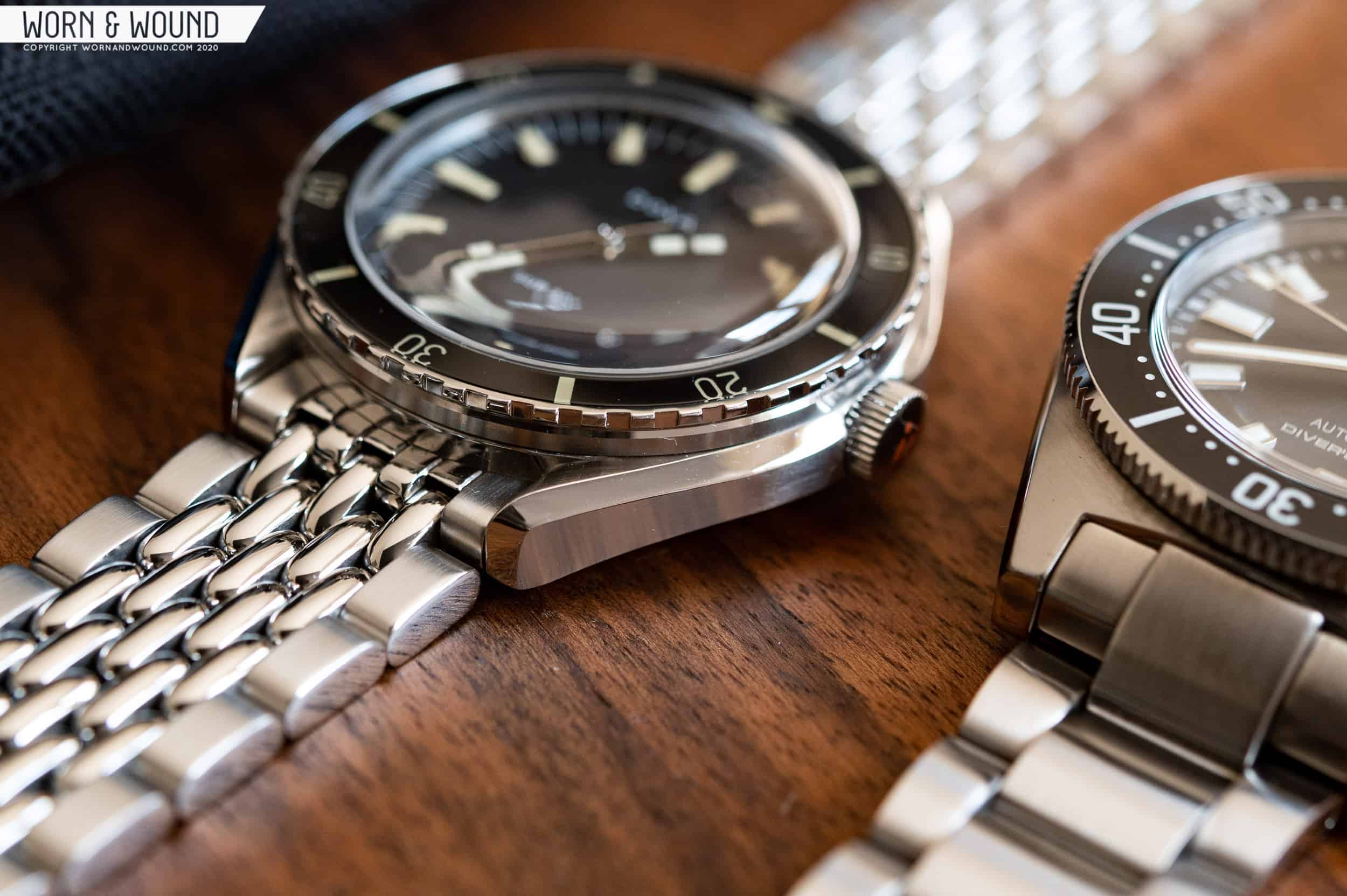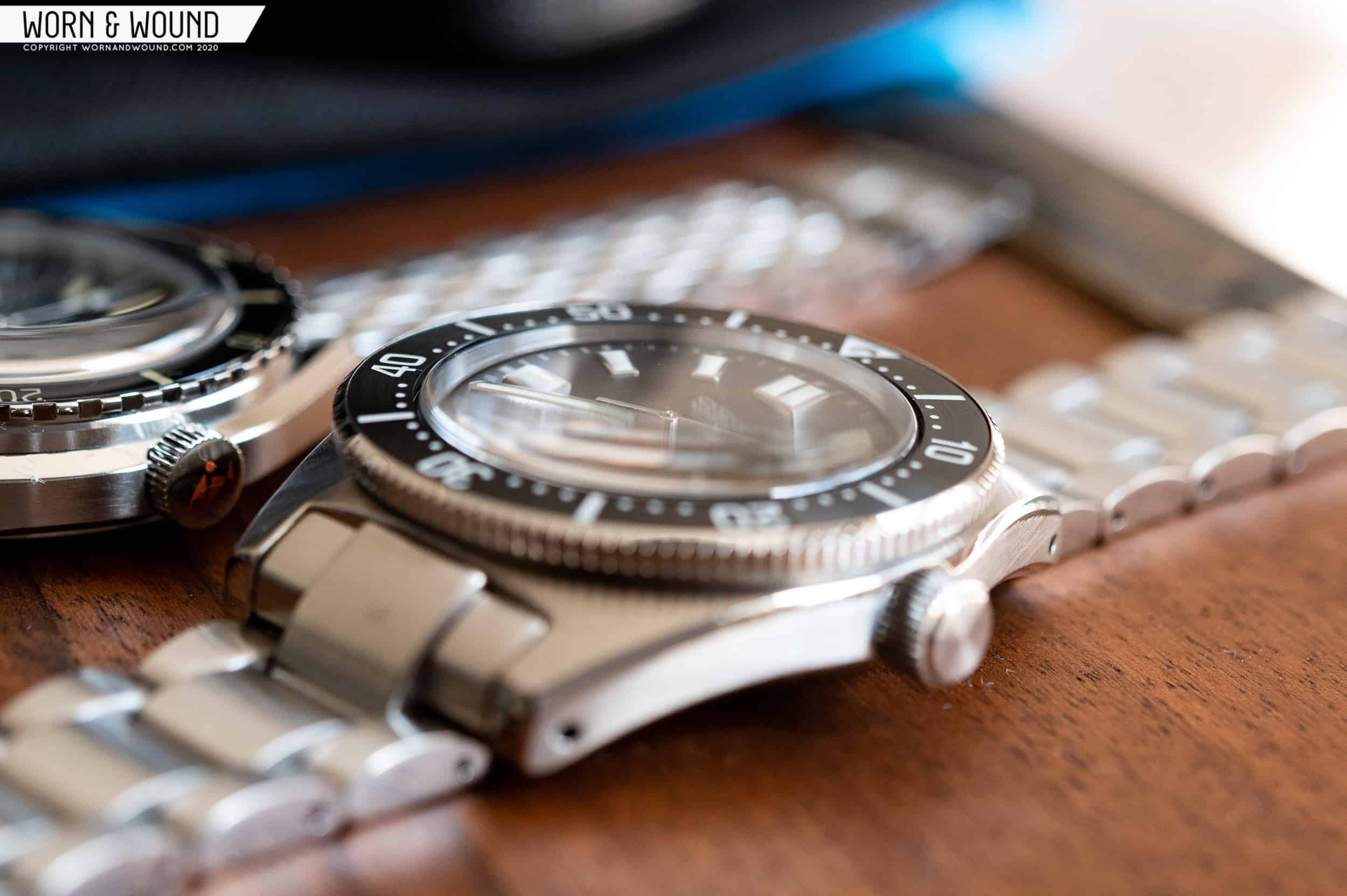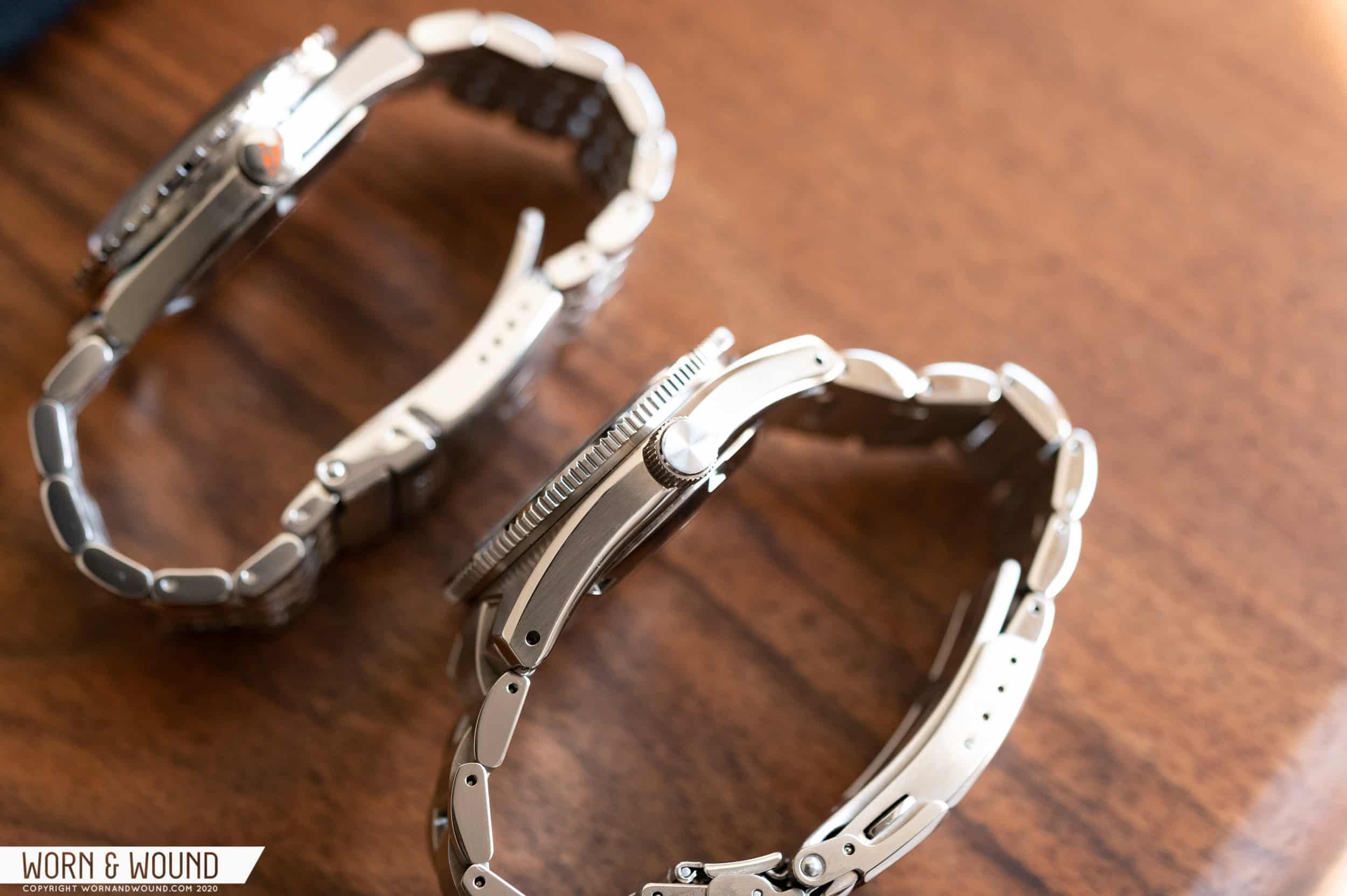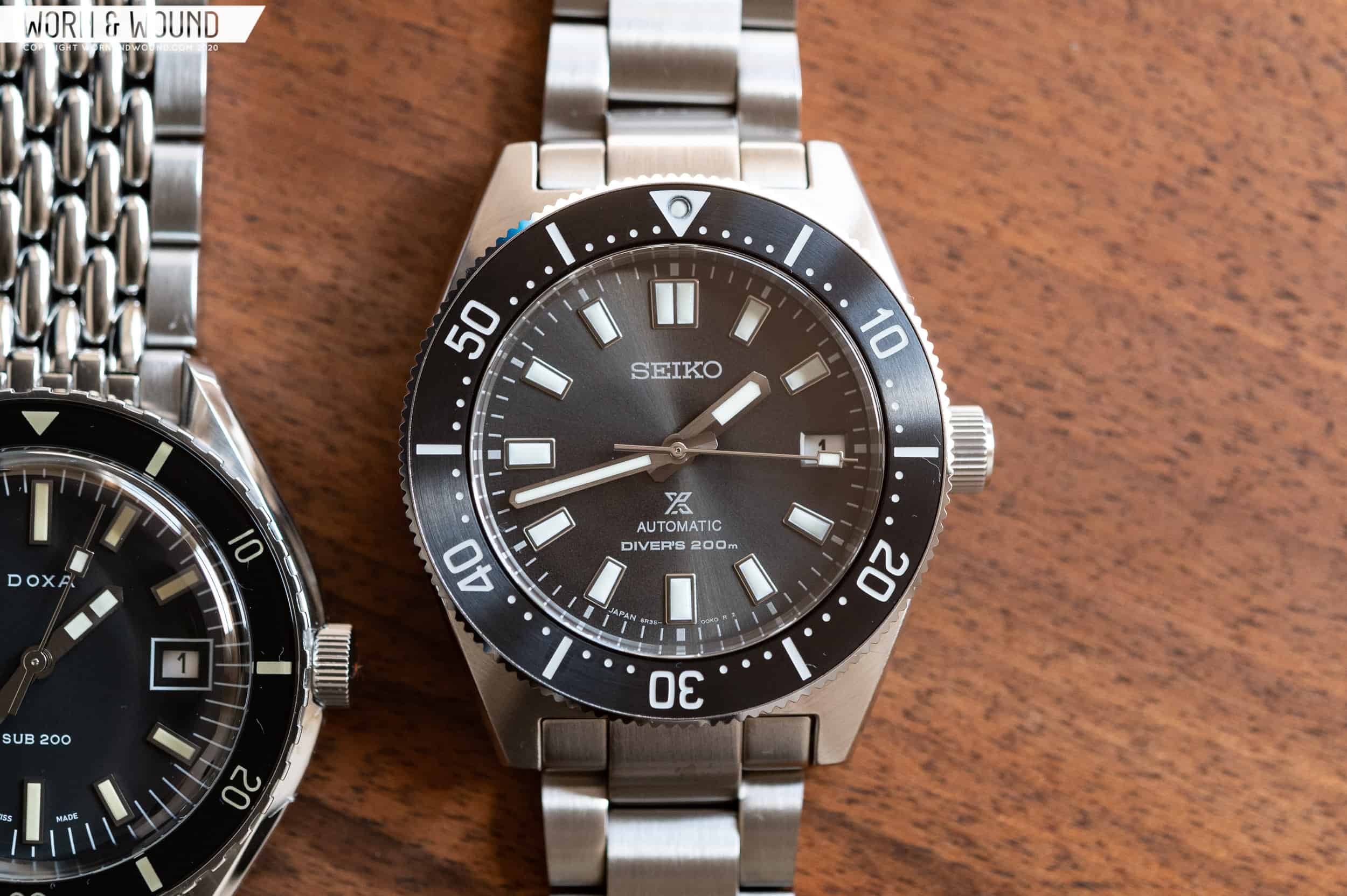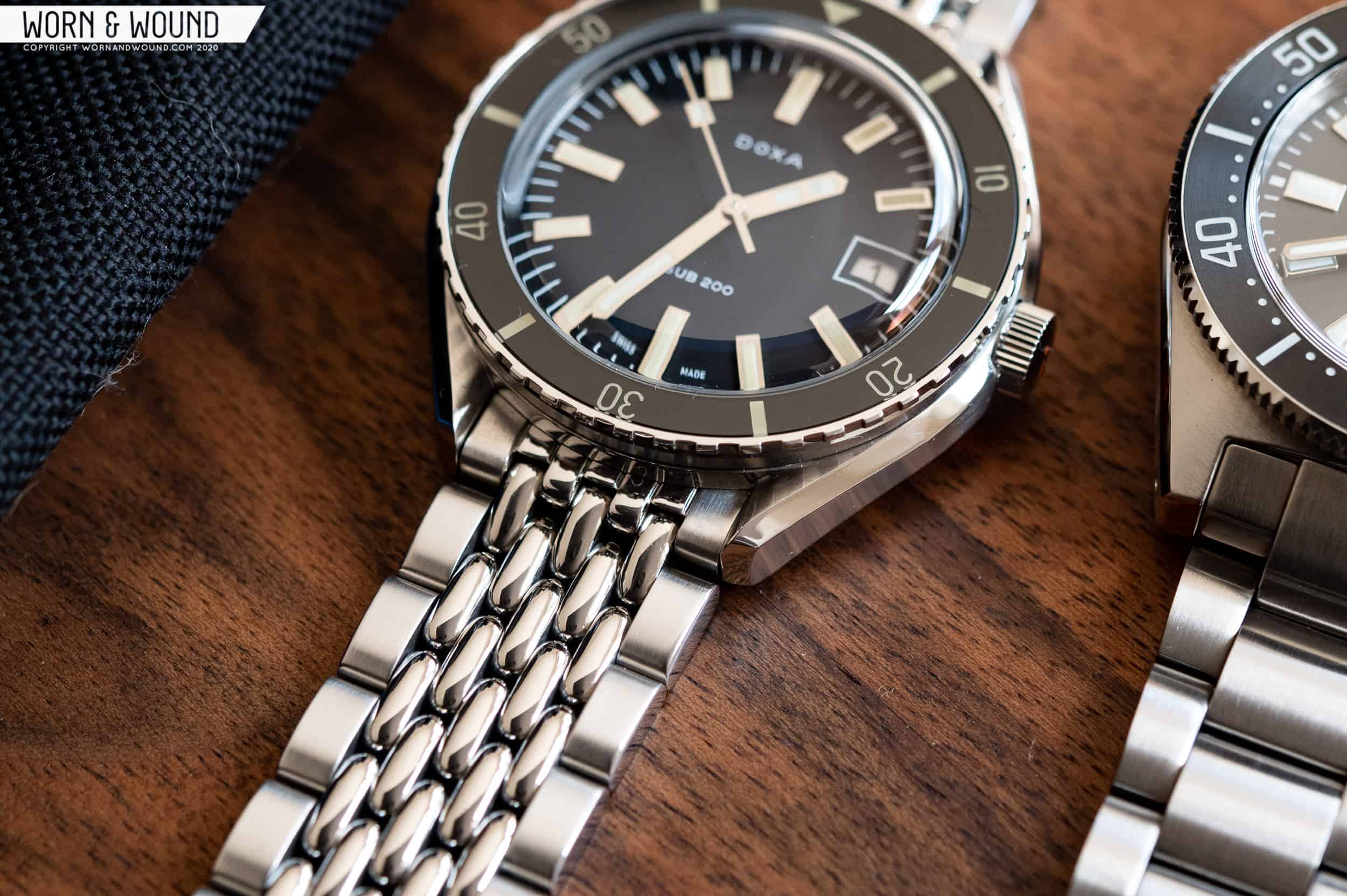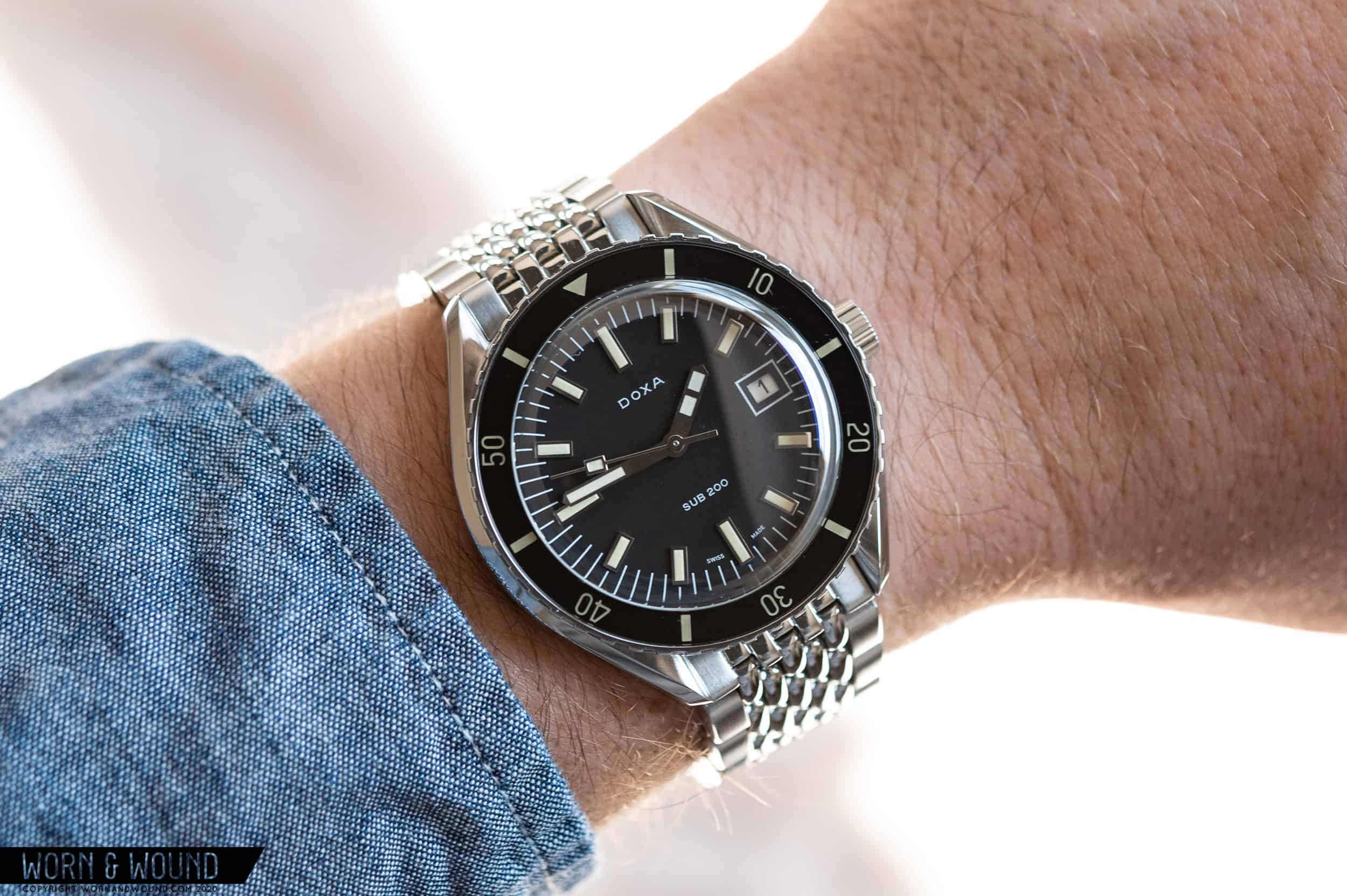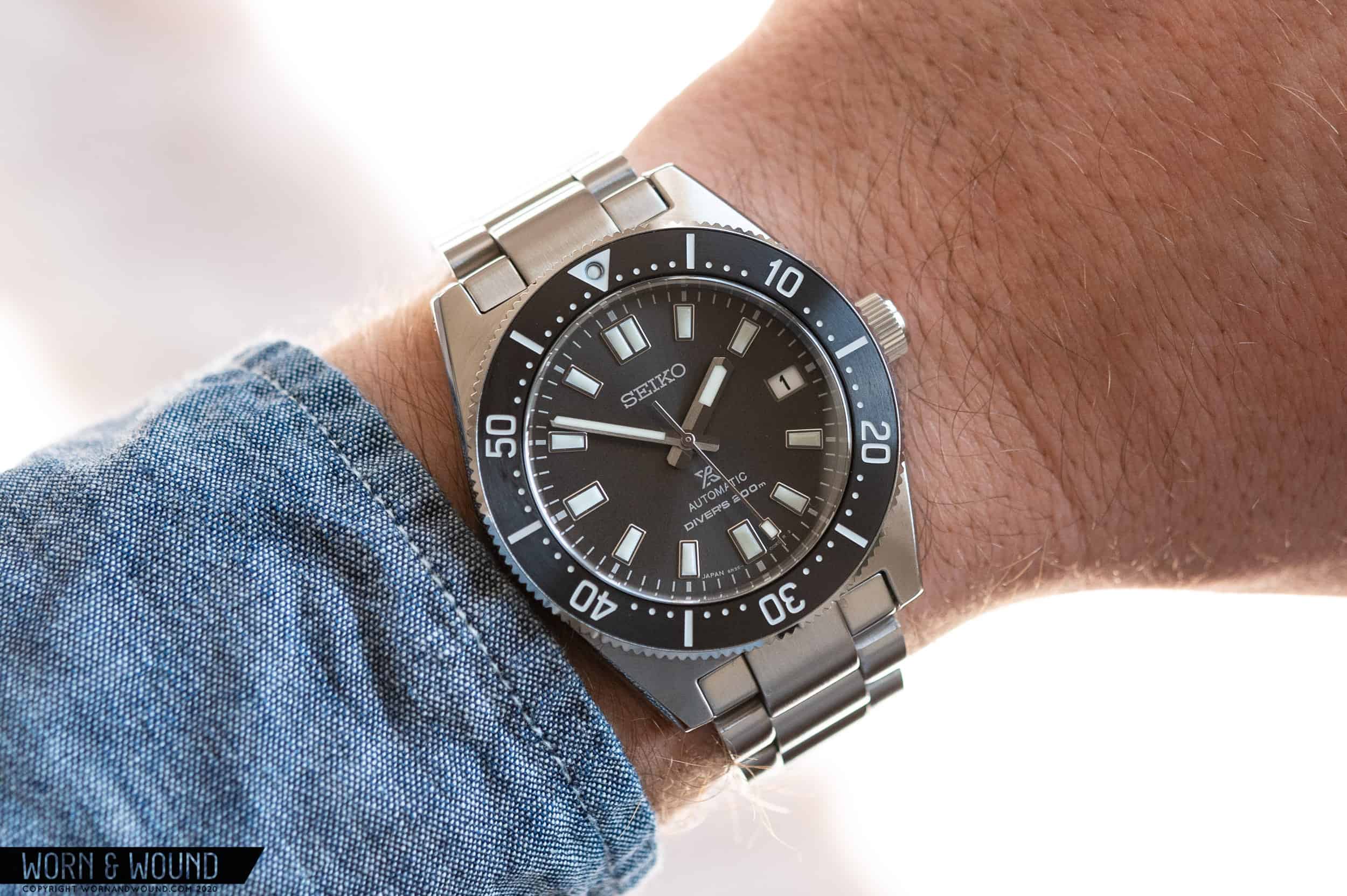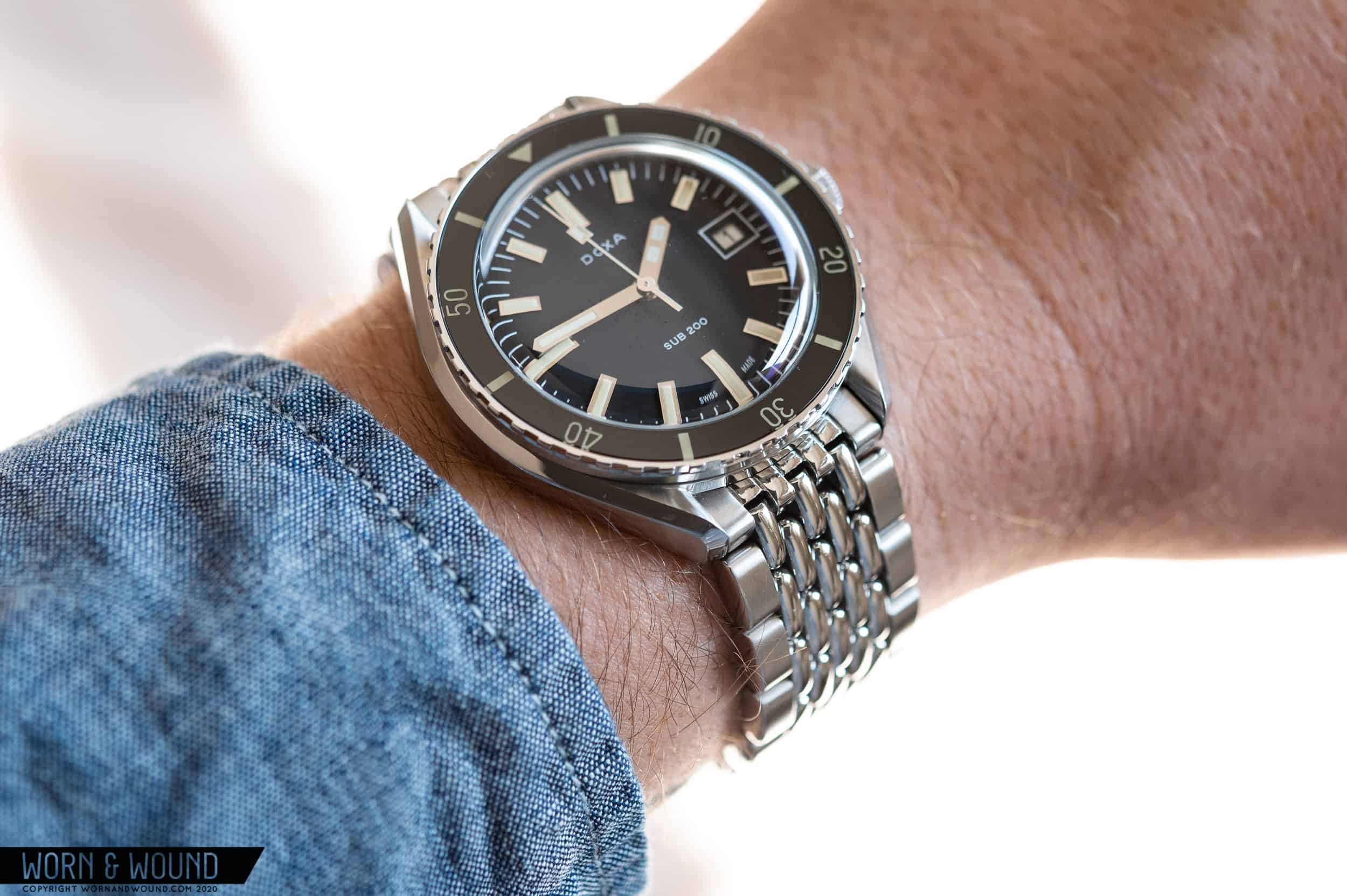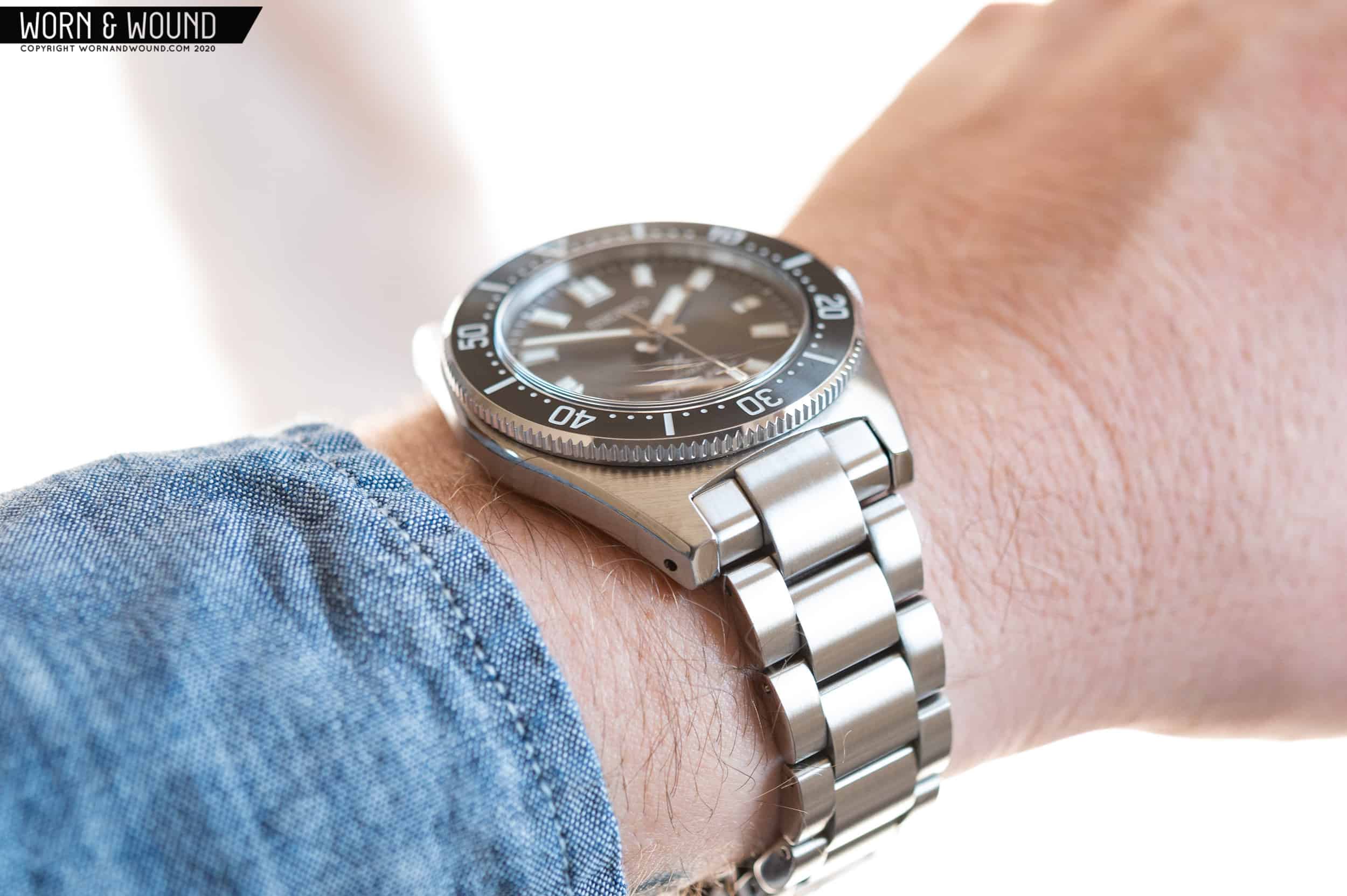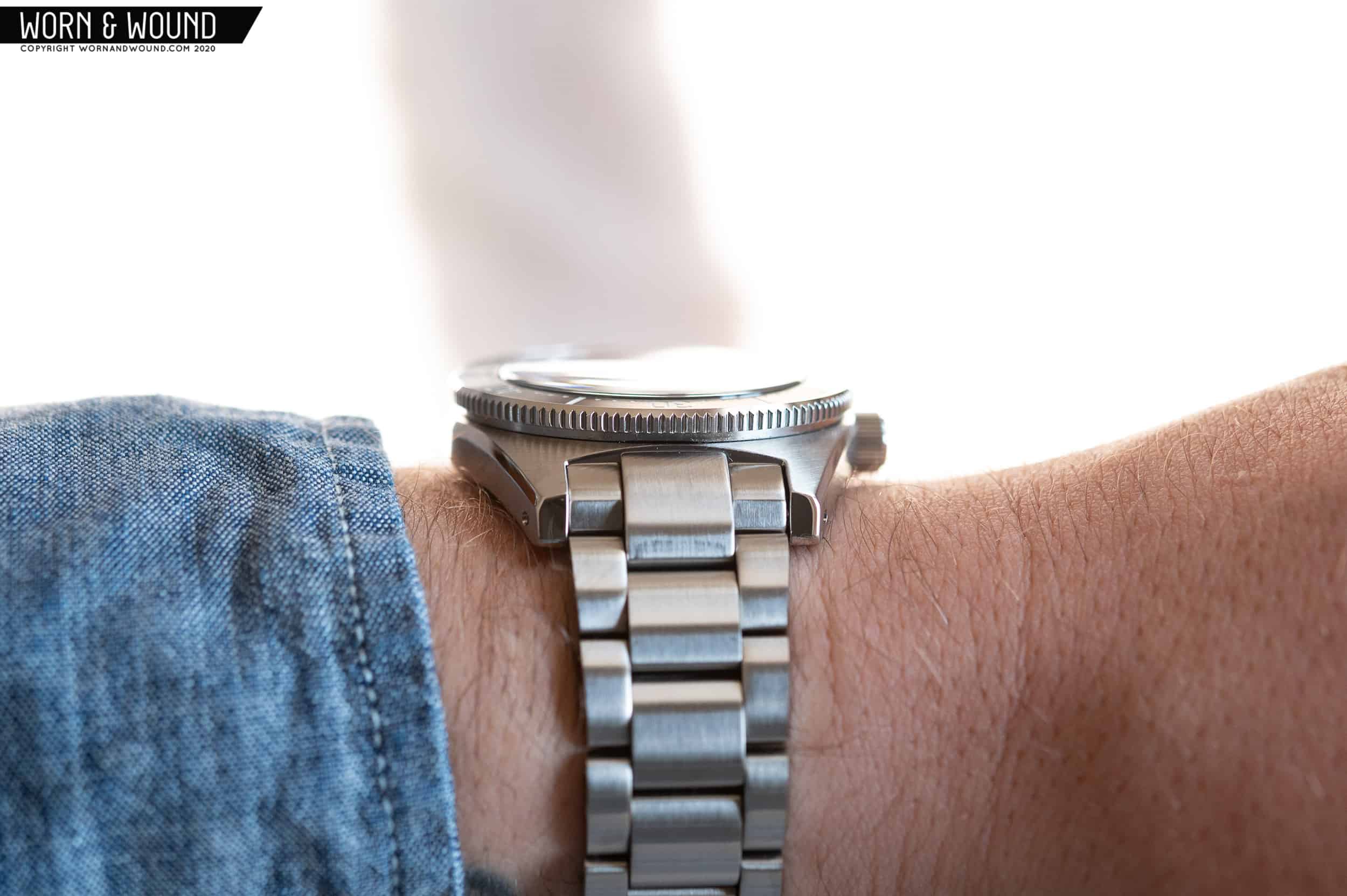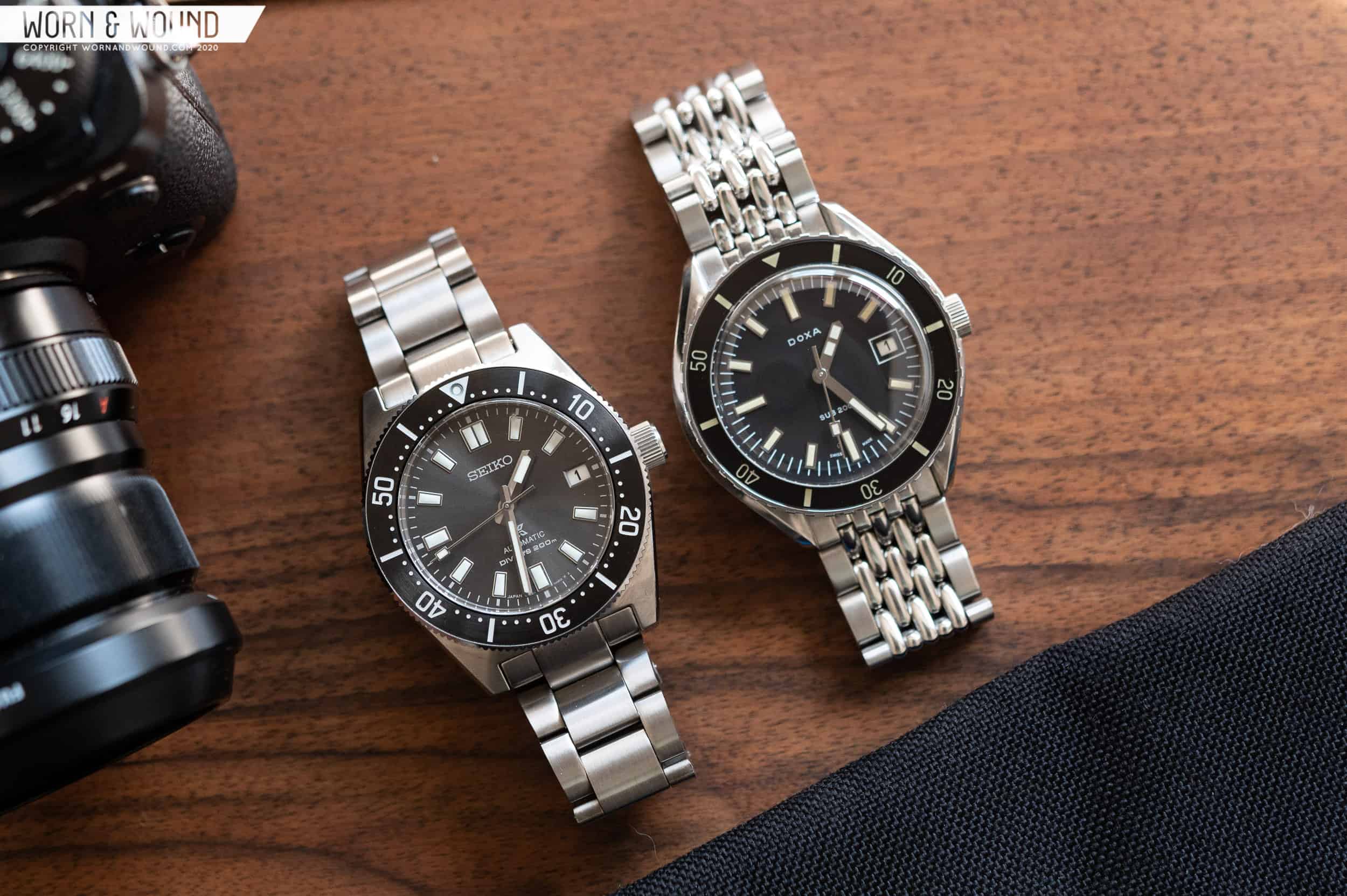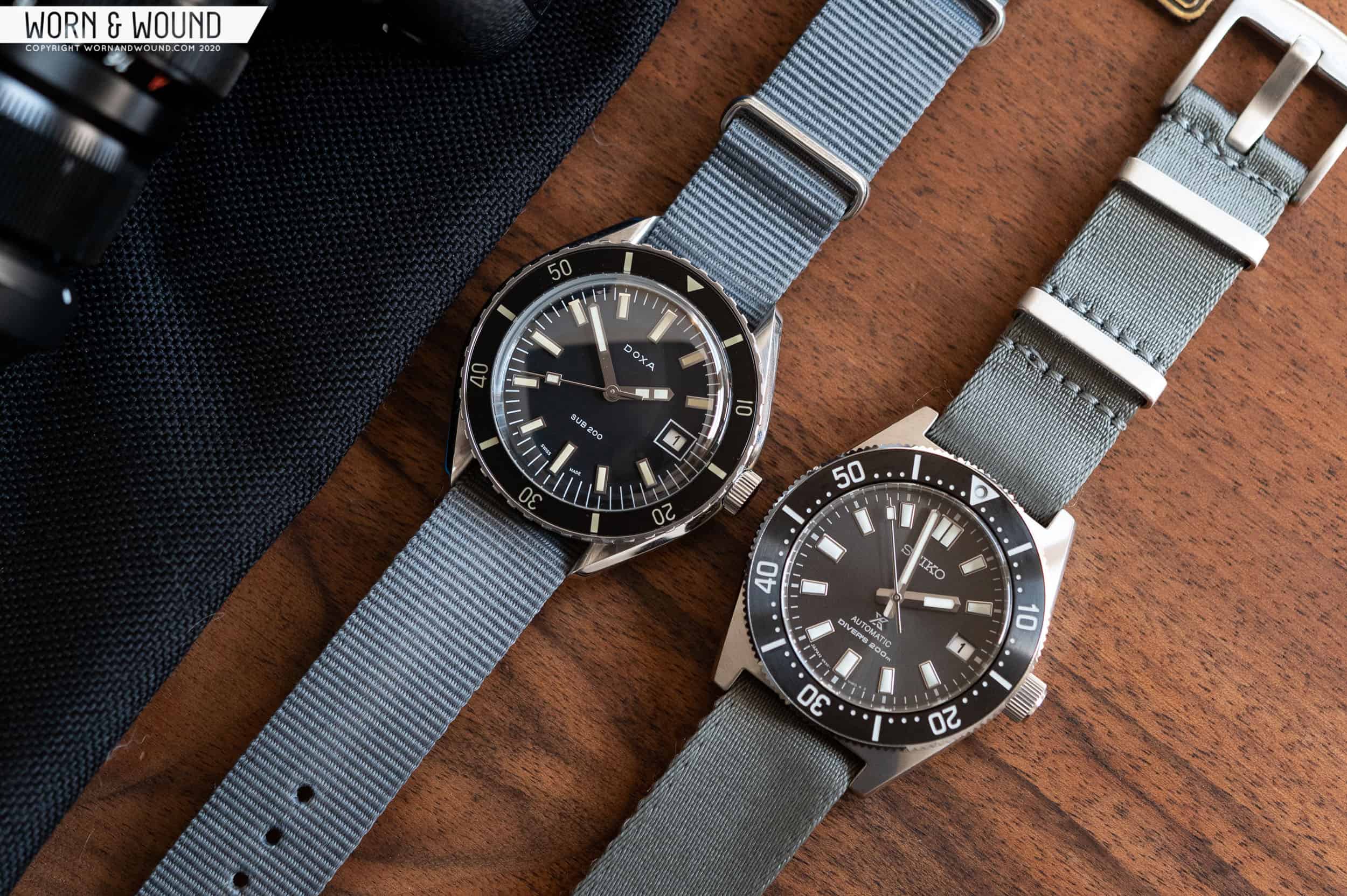If you had asked me a few months ago, I don’t think I’d ever consider getting rid of my Doxa Sub 200. After spending some time with a review unit, I knew I needed to add one to my own collection. A few days after sending it back, the struggle was real and I ended up impulse buying one. I was as happy as can be with the watch, wearing it proudly nearly every day through the lock down. It really shines on the comfortable beads of rice bracelet, and dresses down just as well on a grey nato strap during a fishing run. Everything was great…then it all came crashing down. No, I’m not talking about quarantine life in general, I’m talking about the arrival of my friend’s Seiko SPB143. Sure, you could tell from the marketing photos that this one was going to be good, but upon seeing it in the metal (socially distanced and outdoors), I began to question things with the Doxa. After doing a weeks-long swap of the Doxa for the Seiko with my buddy Shane, the question of whether or not to flip the Doxa for the Seiko was burning in my brain after we swapped back. Was it just a honeymoon phase? Would I miss the Seiko more than I wanted to keep the Doxa? Is there room in my collection for both? Most watch collectors know this train of thought all too well.
Battle of the $1,000 (ish) Divers: Seiko SPB143 vs. Doxa Sub 200
This isn’t necessarily an article about which watch is better, because beauty (and function) is in the eye of the beholder. We posted a side by side photo on Instagram that got a ton of attention, and people are pretty torn on which one they’d pick. I’ve gotten several questions myself on which one is “better”, and what better way to answer that than with a few thousand words and some side by side photos. Please keep in mind that this isn’t the be-all and end-all “which watch is better”, it’s one watch writer’s opinion. That said, feel free to sound off in the comments on which watch you like better and why, we’d love to hear it.
On paper, the watches are quite similar. Each is a 200m rated dive watch that lands right around a thousand bucks. The Doxa comes in at $990, while the Seiko will drain your bank account by $1170. Doxa’s case measures in at 42mm featuring curved lugs and a slim profile with a gorgeous domed sapphire up top, but wears smaller than the measurements suggest. The Seiko is a chunky 40.5mm, featuring a bold brushed stainless steel bezel and a 60’s style barrel-shaped dive watch case — it wears a bit larger than the measurements suggest, but by no means is it a monster on the wrist. So we have two 60’s-inspired dive watches that wear more or less the same on wrist, both with rectangular indices, both rated to 200m of water resistance, and they’re about the same price. Is one better than the other? Let’s try to break it down as best as we can.
First, you can do some research by checking out my review of the Doxa Sub 200, and Zach’s extensive review of the SPB149.
The Case
The biggest difference between the two watches is in the case size and design. Seiko takes a more traditional approach with a barrel-shaped case and flat short lugs. In profile, the case curves to hug the wrist. The stainless steel case measures in at 40.5mm, but wears a bit chunkier than the dimensions imply. The 47.8mm lug-to-lug length is damn near perfect on my 6.75” wrist as well. Seiko treated the case with their DiaShield extra hard coating that will help stand up to scratches, while the Doxa lacks any sort of anti-scratch tech. The Sub 200’s case is flatter in profile, and features some really nice finishing with crisp, clean transitions between brushed and polished surfaces. You’re also treated to twisted lugs, which look great on the watch. While the case of the Doxa features better finishing, the Seiko’s comes off as a no-thrills tool watch — which is exactly what it is. Even though the Doxa’s case measures 42mm wide, the incredibly reasonable 45mm lug-to-lug measurement makes the watch wear significantly smaller than the measurements suggest. To me, the Seiko is more elongated, while the Doxa is more or less circular on your wrist.
If I had to pick a winner, I’d say that the Doxa has a slight edge on case design and execution. The killer profile, twisted lugs, excellent finishing, and beautiful high-domed sapphire are just a bit more impressive than Seiko’s tool-like finishing. Also, the Doxa wears small for its size, which is always impressive to see — a watch that many might write off simply because “ugh, a 42mm vintage-inspired diver is too big”. Well, hard disagree there, you need to try this one on to believe it.
Dial & Bezel
Again, both the Seiko and Doxa features similar dials. The dive style dials sport rectangular applied indices, each filled with lume. Straight hands point to the hours, and minimal text is featured throughout. However, the end result is quite different when looking at the watches. The Seiko’s charcoal sunburst dial is simply stunning. It plays with the light, reflecting the burst pattern with a mix of highlights and shadows, depending on the angle. The applied indices are perfectly executed as well. What really jumps out to me is the finishing on the hands. They’re half polished and half brushed, which gives them a nice pop of bling while retaining legibility. Around the outside of the dial, you have a chunky brushed steel dive bezel that’s bold and aggressive, yet still remains refined thanks to the polished coin edge. Switching over to the Doxa, there’s a whole lot less going on. Rectangular indices filled with a creamy lume run around the outside of the dial. The hands are similar in shape to the Seiko, but are entirely polished — a feature that looks great from some angles, but negatively affects legibility from others. I love love love the typeface used on the dial and the minimal application of text. Around the high dome sapphire, you’ll find a sapphire lumed bezel insert. While it looks nice, the lume falls flat, and the shine of the sapphire cuts down on legibility. Bezel action on the Doxa is snappy and firm, while the Seiko takes a slightly duller and more smooth approach. Overall, the lume on the Doxa is a big miss. It doesn’t last long, it’s uneven between the hands, dial, and bezel, and really needs an overhaul. The exact opposite is true with the Seiko — it’s bright, lasts a long time, and glows a beautiful teal-green.
In terms of the dial and bezel, the Seiko edges out the Doxa. The beautiful sunburst, clean applied indices, gorgeous finishing on the hands, and the overall vibe just work a bit better. The lume on the Seiko blows the Doxa out of the water, and a good reason why people flock to Seiko dive watches is the legibility and lume.
On The Wrist
I’ve touched on it several times in this article alone, but both watches wear similar. They’re comfortable, easy on the wrist, and look great. While you get a bit more shine out of the Doxa, there’s nothing wrong with the heavily brushed finish on the Seiko’s case and bracelet. Both watches ship on a bracelet. With the Doxa, you get a highly articulated beads of rice style bracelet that wears slim and sleek on the wrist. Keeping it secured is a fold over clasp featuring the Doxa fish and their logo. Seiko’s three link bracelet is on the opposite end of the spectrum. It’s hefty and clunky with a rather unwieldy clasp on the bottom. On my 6.75” wrist, the Seiko clasp accounts for roughly 60% of the underside of the bracelet. It interferes with the comfort and flexibility of the bracelet quite a bit. Remove the bracelet and slap either watch on a nato strap, and you’re in for a treat. Both watches excel on a nylon strap. Both bracelet options are just okay, and I prefer the classic look of a grey nato.
On the wrist, both watches are in a dead heat. The Doxa is bit shinier and ornate, while the Seiko’s toolish brushing is understated and tough. Both will excel in different situations. You could more easily dress the Doxa up a bit on the BoR bracelet, while the Seiko is the perfect tool watch for nearly any activity. Both watches wear comfortably, look great, and are sized well for nearly any wrist. This round is a tie.
Standout Features
These watches each have a few tricks up their sleeves. Inside the Seiko, you’ll find Seiko’s own 6R35 movement, which runs for an impressive 70 hours between windings. I love the addition of a more premium movement with a longer power reserve — it’s ideal for the chronic watch swapper. The entire case and bracelet on the Seiko are treated with a clear DiaSheild coating. It’s a super hard clear coat that resists scratches and will result in a watch that looks newer for longer. Both watches sport a domed sapphire crystal sitting atop the case, but the Doxa’s takes things to the next level. It’s a super high dome that reads more like acrylic, but has the scratch-resistance of sapphire. It’s a treat to look at, and one of the main reasons I added the Doxa to my collection. The Doxa’s premium features tend to fall a bit flat, mainly the sapphire lumed bezel. It just needs more lume. The shine and scratch resistance are great, but it would be nice if it functioned as intended. Inside the Doxa, there’s an ETA 2824-2 movement inside, which is becoming harder to find in smaller brands — a nice touch. Another of the standout features on the Doxa is the finishing. I mentioned the specifics earlier, but it’s worth pointing out again how the brushed and polished surfaces interact with light.
I have to give this round to the Seiko. The upgraded movement and anti-scratch coating edge out the sapphire bezel on the Doxa, which as a main selling point, falls a bit flat. The SPB143 really feels like a solid tool watch, with the tech and specs to back it up. The standout features are executed better than those on the Doxa.
Conclusions
Here we are…the conclusion. Here’s where you expect me to say on the record that one watch is better than the other. Well…I can’t. I just can’t. There’s a lot to like about both watches, and I do believe that there’s room for both in your collection. The Seiko is the platonic ideal of what a Seiko dive watch should be with the aesthetic and tech to back it up. It’s a tool that happens to look and wear better than most tools out there. The Doxa on the other hand is a bit more stylized, a touch more vintage looking, and has a bit more of a bling factor. I’m by no means calling the Doxa a dressy diver, but the fantastic case finishing, beautiful crystal and vintage-inspired beads of rice bracelet put the Doxa in a bit of a different category of diver than the Seiko. Originally, when I borrowed the Seiko for a full week, I thought upon getting my Doxa back that I would immediately sell it off and snag a Seiko. I didn’t though. I genuinely believe that while the two watches share many similar specs, measurements, and mid-century dive watch design cues, they’re truly different beasts. There are situations in which I’d reach for the Seiko over the Doxa, and vice versa. The truth is, I’m looking for a way to justify picking up a Seiko. As a die-hard fan of the brand, the SPB149 is a solid watch that many Seiko fans like myself will feel the need to own. As for ditching the Doxa, there’s just something charming and fun about the watch that I would find myself missing. For me, only a significant amount of time with both watches in my box would tell who’s the winner, but for now, it’s a draw.
What do you think? Seiko or Doxa, and why? Make sure to let us know in the comments below.









 Featured Videos
Featured Videos




